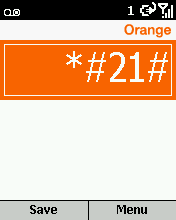 Call me a skeptic, but I have seen it too many times in the mobile banking industry to not believe it this time. The latest attempt at collaboration between banks and mobile operators was announced in France recently (see here and here). While it is a logical way to go for the industry to really get traction, history is cluttered with many failures for banks and mobile operators working together in a formal way. At the risk of being contradicted, I will not list the many attempts here, but readers are welcome to search the web for examples.
Call me a skeptic, but I have seen it too many times in the mobile banking industry to not believe it this time. The latest attempt at collaboration between banks and mobile operators was announced in France recently (see here and here). While it is a logical way to go for the industry to really get traction, history is cluttered with many failures for banks and mobile operators working together in a formal way. At the risk of being contradicted, I will not list the many attempts here, but readers are welcome to search the web for examples.I believe that the differences between these types of organisations are so fundamental that it is not possible for them to collaborate formally. Of course, it is important that they work together, but the most effective is by working through defined interfaces that exist already. (for instance clearing and settlement interfaces already exist in banking, standard API's to connect to network services already exist). By establishing organisations to formally collaborate nobody will benefit and a lot of time and money will be lost.












